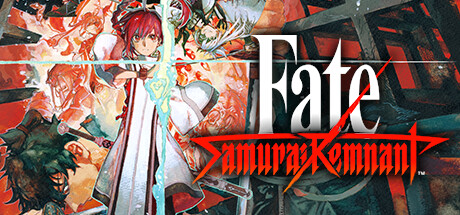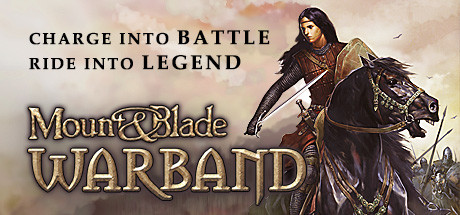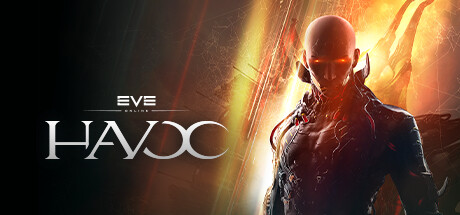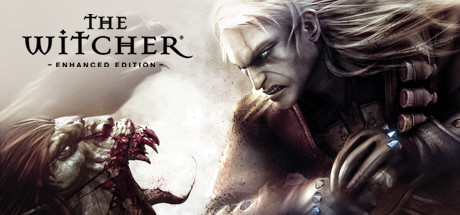Fate/Samurai Remnant Reviews
“Your wish shall perish...” A Holy Grail War begins in Edo Japan. A brand new Fate action RPG presented by TYPE-MOON and KOEI TECMO GAMES.
| App ID | 1902690 |
| App Type | GAME |
| Developers | KOEI TECMO GAMES CO., LTD. |
| Publishers | KOEI TECMO GAMES CO., LTD. |
| Categories | Single-player, Steam Achievements, Steam Cloud, Partial Controller Support |
| Genres | Action, RPG |
| Release Date | 28 Sep, 2023 |
| Platforms | Windows |
| Supported Languages | English, Simplified Chinese, Traditional Chinese, Korean, Japanese |
Age Restricted Content
This content is intended for mature audiences only.

6 285 Total Reviews
5 723 Positive Reviews
562 Negative Reviews
Very Positive Score
Fate/Samurai Remnant has garnered a total of 6 285 reviews, with 5 723 positive reviews and 562 negative reviews, resulting in a ‘Very Positive’ overall score.
Reviews Chart
Chart above illustrates the trend of feedback for Fate/Samurai Remnant over time, showcasing the dynamic changes in player opinions as new updates and features have been introduced. This visual representation helps to understand the game's reception and how it has evolved.
Recent Steam Reviews
This section displays the 10 most recent Steam reviews for the game, showcasing a mix of player experiences and sentiments. Each review summary includes the total playtime along with the number of thumbs-up and thumbs-down reactions, clearly indicating the community's feedback
Playtime:
1200 minutes
👍 : 0 |
😃 : 0
Positive
Playtime:
4799 minutes
its good. buy it
👍 : 0 |
😃 : 1
Positive
Playtime:
553 minutes
I love Saber! (Yamato Takeru) so much.
👍 : 0 |
😃 : 0
Positive
Playtime:
1147 minutes
Fate/Samurai Remnant is a standout entry not only in the expansive Fate franchise but also within the action RPG genre, merging historical fiction with supernatural combat in a way that feels both familiar and refreshingly new. Set in a fictionalized Edo-period Japan, the game tells the story of Miyamoto Iori, a young ronin and disciple of the legendary Musashi, who finds himself unwillingly dragged into the Waxing Moon Ritual—a deadly battle royale where Masters and their summoned Servants fight for the ultimate wish-granting power. From the very start, the game sets a distinct tone, blending rich atmosphere with mysticism and tension. The environments are beautifully rendered, with city districts like Yoshiwara and Kanda brought to life through a mix of stylized lighting and historically inspired detail. While not every corner is bustling with activity, the overall sense of place is strong, helped along by an evocative soundtrack and subtle environmental storytelling.
The combat system is more layered than one might expect from a title partially developed by Omega Force, best known for its Musou games. While Iori can engage in rapid, stance-based swordplay reminiscent of action titles like Nioh or Tales of Arise, he also has access to magical techniques and can call upon his Servant for assistance. The stance system, which allows you to switch between elemental styles on the fly, is particularly satisfying. Each stance offers its own strategic advantages—some break guards, others allow for crowd control or dodging. The pacing of battles requires adaptation and foresight, making encounters more engaging than simple button-mashing. What elevates the gameplay further is the integration of rogue Servants—legendary figures from myth and history—whom you can temporarily recruit and directly control, adding a burst of power and personality to combat scenarios. While the core loop of engaging enemies and capturing leylines across Edo can become repetitive, the challenge and creativity injected into boss battles keep the adrenaline high.
The leyline system adds a tactical layer to the experience. As you vie for control over districts in Edo, the game occasionally shifts from moment-to-moment action to more strategic decision-making. You’ll need to consider which routes to defend or attack, balance Iori’s fatigue, and time the use of healing shrines and buffs. This map-based territory contest is a unique mechanic that gives the game a board-game-like rhythm and a sense of progression outside of just grinding. Yet, over time, the novelty can wear thin. Some players may find the back-and-forth of reclaiming territories to be more of a distraction than an exciting diversion. Nonetheless, it effectively connects the narrative with the gameplay, emphasizing the escalating stakes of the Waxing Moon Ritual.
Narratively, Fate/Samurai Remnant leans heavily into exposition and character interaction, which can be both its strength and its stumbling block. For fans of the Fate series, the lore runs deep and rewarding. The game explores questions of fate, agency, and legacy, using Iori’s reluctance and his evolving bond with Saber as the emotional anchor. Saber, whose identity is a mystery at first (a common Fate trope), steals many scenes with their charisma and moral clarity. The contrast between Saber’s near-divine presence and Iori’s grounded, sometimes brooding demeanor creates a dynamic that evolves meaningfully across the story. Other Masters and Servants, including historical figures like Jeanne d’Arc and figures from Asian mythology, are introduced with their own motivations and arcs, lending the story a sprawling, epic feel. However, the sheer volume of dialogue and the pacing of plot reveals may frustrate those hoping for a more straightforward action-adventure. The story demands patience and a willingness to engage deeply with its thematic undercurrents.
Character progression is robust and sometimes overwhelming. Iori’s skill trees offer multiple paths—buffing specific stances, unlocking magical techniques, or enhancing his ability to collaborate with Servants. Weapon upgrades are tied to crafting systems that require item hunting, and the game includes various mini-games—sword-sharpening, tea preparation, even writing poems—to provide stat boosts or temporary buffs. These systems contribute to immersion, making Edo feel lived-in and reinforcing Iori’s role not just as a warrior but as a part of his community. However, there are moments where the number of available mechanics risks bogging down the experience. Players less interested in optimization may find themselves skipping these systems, even at the cost of missing out on depth.
Visually, the game is a feast for fans of anime aesthetics and historical fantasy. The character designs are distinct and expressive, particularly the Servants, whose presence always shifts the tone of a scene. Special attacks are bombastic and eye-catching, and the game makes good use of lighting and particle effects to enhance the magical combat. While the environments are often static and not as interactive as one might hope, the overall art direction holds everything together with elegance. Performance-wise, the game runs smoothly on high-end PCs, with quick load times and consistent frame rates. However, it suffers on more limited hardware. The Nintendo Switch version, while admirable in its ambition, sees notable frame drops and texture pop-in. Steam Deck and other handheld PC devices similarly struggle, and players should be aware of potential crashes or overheating issues on those platforms.
What truly sets Fate/Samurai Remnant apart is its ambition. This is not a disposable spin-off or a fan-service-heavy side story—it’s a game that seeks to stand on its own, appealing to both Fate veterans and newcomers alike. It offers a thoughtful, emotionally complex story wrapped in an innovative mix of action, strategy, and world-building. While it’s not flawless—some may find the repetition, pacing issues, or dense lore off-putting—it is undeniably rich in substance and style. It’s a game that asks for your time and attention and gives back a detailed, rewarding experience in return.
In the end, Fate/Samurai Remnant is a bold and successful fusion of genres and ideas. It feels like the spiritual successor to both the Fate/Extella games and classic action RPGs, with just enough tactical flavor to set it apart. For those who appreciate layered storytelling, stylized combat, and mythological reinterpretations, this game offers dozens of hours of immersive content. It may not be perfect, but it is passionate—and that passion is evident in every frame, every line of dialogue, and every duel under the moonlit Edo sky.
Rating: 9/10
👍 : 3 |
😃 : 0
Positive
Playtime:
3499 minutes
A strong entry in the Fate franchise. Personally, I prefer this far more than the two Extella works in terms of plot despite Nasu himself working on Extella. The themes explored in FSR is far more interesting to me personally, and I'll take Edo over cyber-moon anytime.
I find the main character dynamics Iori to be the absolute standout. Of the various endings, Entreat the Darkness is the absolute standout for me. Different endings focus on different characters.
What I do find somewhat.... lacking is that I felt like there could have been... more? Or perhaps more character exploration from the side characters. The end oddly felt... anti-climatic? Unsatisfying? The true name reveals weren't given enough weight perhaps. Most of the nameless servants feel like they don't do enough to earn their place in the story.
The story felt like it would have benefited from having more to do with. It is still enough for me to like the characters. I suppose I wish I had gotten more... which is good.
👍 : 0 |
😃 : 0
Positive
Playtime:
6220 minutes
Fate/Samurai Remnant is a love letter to Fate fans - especially those who played the mobile game F/GO - due to its inclusion of so many iconic characters like Musashi, Jalter (sorta), and having some lore from F/GO. But, this game is also a great entry into the Fate franchise for new fans, as the game does a good job of explaining what servants, the holy grail (waxing moon in this game), and other key details are in the story. They even have a logbook, which allows you to read through all the lore in-game.
The game itself is very fun, with a long campaign with classic Type-Moon route divergences to make each playthrough more unique. An NG+ is highly recommended to get the full story and understand the intricacies of every character. Thankfully, NG+ carries over everything - levels, skills, items, money, so going from NG to NG+ is a seamless experience. There's also a fast-forward or skip button to speed through dialogue you've already read. Similar to Yakuza, Fate/Samurai Remnant offers side stories (called digressions in-game) for you to play alongside the main story, and these digressions can be humorous but also do a great job of expanding the characters of the whole cast. Also, it goes without saying, but this game is a musou-style game. This game does have a minor flaw in that you can only play as the protagonist and his servant most of the time, but the game does allow you to play as other characters in digressions or battle recollections (basically replays of boss fights), and battle recollections offer you in-game rewards, so playing them is a good idea anyway. You can also play as certain servants in the main story aside from the protagonist’s servant. Overall, this game is well worth buying. It has a fun cast and story, many digressions, and if you enjoy musou gameplay, this game won’t disappoint.
👍 : 0 |
😃 : 0
Positive







